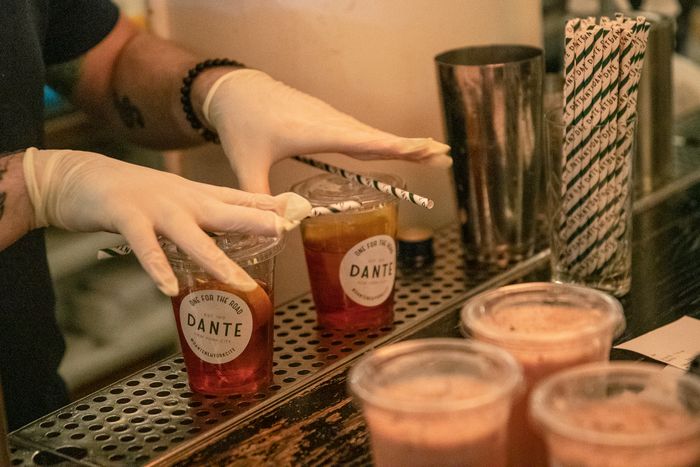
For 16 months, the owners and workers at New York City’s bars and restaurants have been forced to navigate and enforce a chaotic tangle of rules and regulations with little time to prepare for anything: mandated closings; sudden re-openings; changing rules about what size outdoor-dining structures must be and what times, exactly, they can be used; ever-fluctuating capacity and seating restrictions; decrees that anyone can dine outside without masks while some people can dine inside with masks; new decrees that allow anyone to eat anywhere without any kind of mask; curfews; temperature checks; and contact-tracing forms.
Finally, though, even if things weren’t starting to look great, exactly — there is still a massive hiring crisis fueled in part by the way this industry has historically mistreated its labor force, for example — they were at least starting to feel more steady. The rules seemed clear, customers understood what was expected of them, and re-openings across the city offered glimmers of optimism after more than a year of dismay, sadness, and confusion.
Then yesterday afternoon, the New York State Liquor Authority announced the end of a particularly popular, and successful, pandemic-era development: takeout and delivery alcohol from bars and restaurants. There was always the expectation that this could end, even as this new source of revenue helped countless businesses stay in operation. The announcement itself was disappointing enough, but the timing was, as New York Times restaurant critic Pete Wells put it, “one last sucker punch for restaurants and bars.” The SLA made the announcement on Twitter, and gave these businesses just over 33 hours to prepare and comply. (Adding to the confusion was the fact that, as recently as June 6, the SLA explained — also on Twitter — that the program would continue until at least July 5.)
When asked about the squeeze this puts on thousands of businesses that are still suffering through the hardship of more than a year without solid business, the SLA’s official response is: Hey, don’t look at us. A rep for the group writes, “The Legislature failed to codify the ability of restaurants to offer alcohol to-go. With the state’s declaration of emergency expiring on Thursday, all temporary pandemic-related suspensions and directives, including privileges allowing bars, restaurants, and manufacturers to sell drinks to go, will end after June 24th.”
Meanwhile, a statement from Melissa Fleischut, the president of the New York State Restaurant Association points to the inanity of this decision:
A permanent extension of alcohol to go is supported by 78% of New Yorkers, but the Legislature failed to extend it and now the Executive Order has ended. Only in New York would elected officials ignore an overwhelming majority of the public. Restaurants are struggling to find staff, keep up with rising costs and manage a limited supply of goods, and nearly two thirds of the applicants will not receive Restaurant Relief Funds. New York State must do more to help, not hurt, our restaurant industry.
Why do this now? In explaining the end of the order, Cuomo said yesterday that the timing will “punctuate the end of the emergency that we have been in.” (As of yesterday, on average, more than four New York City residents still die from the virus each day, and anyone under 12 years old remains unable to receive any kind of vaccination, so: “The end.”)
The bigger question is: Why do it at all? After the successful rollout of similar programs, a host of other areas have moved to make sure to-go drinks are here to stay: “Fifteen states so far, including Iowa, Arizona, and Wisconsin, have permanently legalized them and nearly a dozen have given them extensions,” according to a report this week in the Washington Post.
That makes New York one of only a few states to lose this program. So, who wins with the end of “off-premises privileges,” as the SLA calls it, for bars and restaurants? The owners of liquor stores, mostly, who once again become the main purveyors of take-home booze. Who loses? Maybe you, a member of the public who had come to enjoy the convenience of, say, picking up a couple bottles of wine at a nearby restaurant and taking them home.
Who really loses, yet again, are the operators and workers who were given a single day’s notice — after being told something completely different less than three weeks ago — and now must scramble to adjust, and enforce, new regulations one more time. Will it be the final time this happens? Who knows! For now, it only adds to the feeling that the needs of these businesses are not really all that important to the state’s lawmakers, a reality that’s been reinforced far too many times throughout this pandemic.
This post has been updated to correct a statement erroneously attributed to the SLA.





